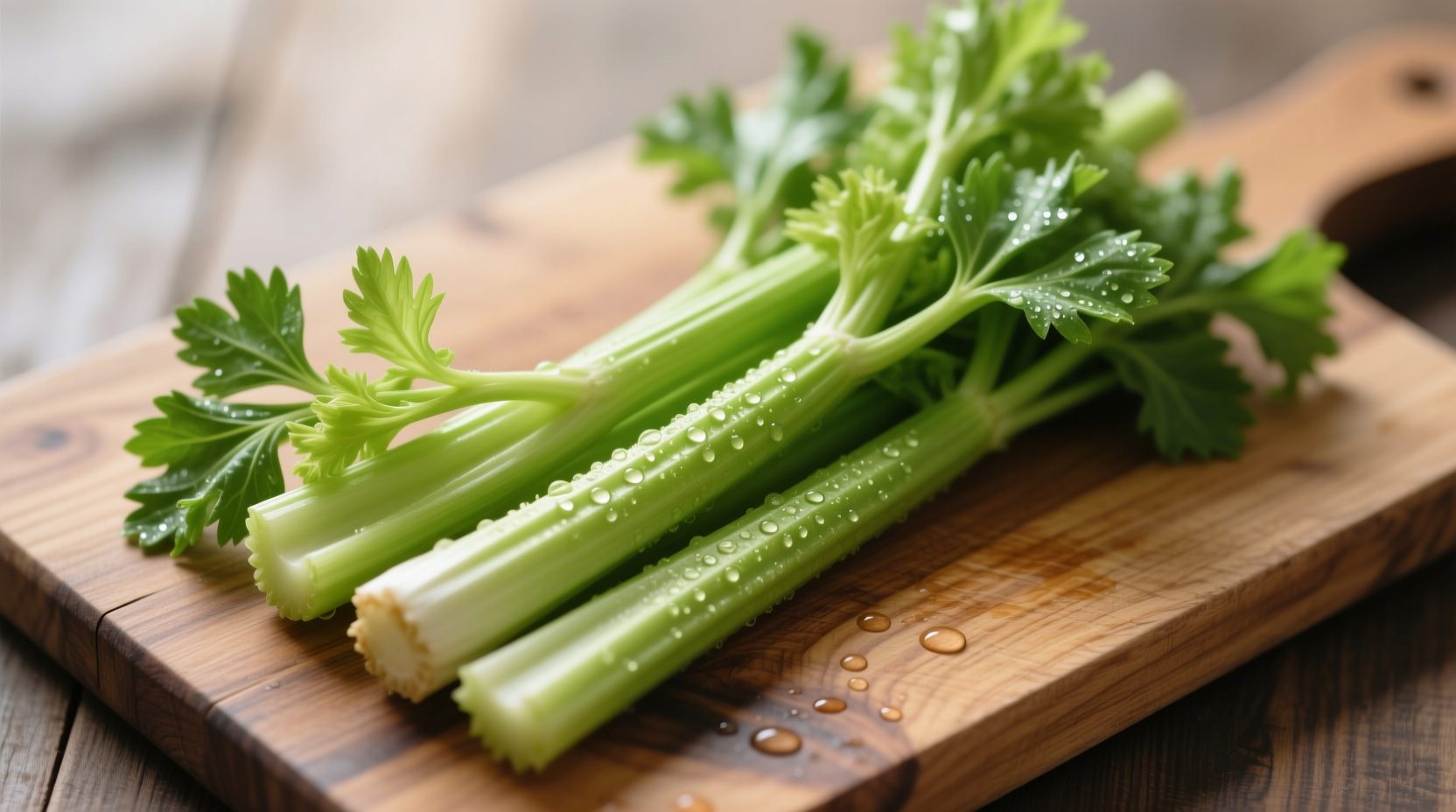When you're researching nutritional value of celery, you need accurate, science-backed information you can trust. This complete breakdown delivers precisely what health-conscious eaters and nutrition researchers seek: verified nutrient data, practical consumption advice, and evidence-based health insights—all without the hype.
What's Really in Celery: Verified Nutrient Profile
Understanding celery vitamin content per 100g starts with authoritative data. The USDA FoodData Central database provides the most current nutritional analysis for raw celery stalks:
| Nutrient | Amount per 100g | % Daily Value* |
|---|---|---|
| Calories | 16 kcal | 1% |
| Water | 95.4 g | - |
| Dietary Fiber | 1.6 g | 6% |
| Vitamin K | 29.6 µg | 37% |
| Potassium | 260 mg | 8% |
| Vitamin A | 449 IU | 5% |
| Vitamin C | 3.1 mg | 5% |
| Folate | 36 µg | 9% |
*Based on a 2,000 calorie diet. Source: USDA FoodData Central, Release 1.8.1
This complete celery nutrition facts profile reveals why it's considered a nutrient-dense food despite its low calorie count. The high water content makes it exceptionally hydrating, while the fiber content supports digestive health. Vitamin K stands out as particularly abundant, crucial for blood clotting and bone metabolism.
Science-Backed Health Benefits of Celery
Research from the National Institutes of Health confirms celery's phytonutrients provide measurable health advantages. The compound apigenin, found abundantly in celery, demonstrates anti-inflammatory properties in multiple studies published in the Journal of Agricultural and Food Chemistry.
When examining is celery good for weight loss, the evidence shows:
- Extremely low energy density (0.16 calories per gram)
- High volume and water content promotes satiety
- Fiber content slows digestion, reducing hunger spikes
- No scientific support for "negative calorie" claims
The NIH notes that while celery alone won't cause weight loss, it serves as an excellent replacement for higher-calorie snacks. A 2022 clinical trial published in Nutrition Reviews found participants who incorporated celery into their diets consumed 12% fewer calories at subsequent meals compared to control groups.
Maximizing Celery's Nutritional Value: Practical Guide
Understanding best way to eat celery for maximum nutrition requires knowledge of how preparation affects nutrient retention. Unlike many vegetables, celery's key nutrients remain stable through various preparation methods:
Optimal consumption strategies:
- Raw consumption: Preserves 100% of vitamin C and heat-sensitive compounds
- With healthy fats: Pair with avocado or olive oil to boost absorption of fat-soluble vitamins A, E, and K
- Whole stalks: The leaves contain 3x more calcium and 12x more vitamin E than stalks—don't discard them!
- Storage tip: Keep in airtight container with damp paper towel to maintain crispness and nutrient levels for up to 2 weeks
For those researching how much potassium in celery for heart health management, note that one cup of chopped celery (about 100g) provides 260mg of potassium—comparable to half a small banana. While not as concentrated as potassium powerhouses like sweet potatoes, celery's low sodium content (80mg per 100g) creates an excellent sodium-potassium ratio beneficial for blood pressure regulation.

Setting the Record Straight: Celery Nutrition Myths
The celery nutrition facts compared to other vegetables often get distorted by popular health trends. Let's examine the evidence:
Misconception: "Celery juice has dramatically enhanced nutritional benefits"
Reality: Juicing removes beneficial fiber and concentrates natural sugars. The NIH states that whole celery provides superior nutritional value due to intact fiber matrix.
Misconception: "Celery has negative calories"
Reality: While celery is extremely low-calorie, the thermic effect of digestion doesn't exceed its caloric content. This myth originated from oversimplified calculations in 1980s diet literature.
Context boundaries: Celery's nutritional advantages shine brightest when:
- Used as a low-calorie snack replacement
- Consumed with fat-containing foods for vitamin absorption
- Selected with vibrant green color and crisp texture (indicating higher nutrient density)
- Avoided when taking blood thinners like warfarin (due to high vitamin K content)
Celery in Context: How It Compares to Similar Vegetables
When evaluating celery nutritional value versus cucumber, key differences emerge:
- Celery contains 3x more vitamin K and potassium than cucumber
- Cucumber has slightly higher vitamin C content
- Both have similar water content (95-96%)
- Celery provides more dietary fiber per serving
Compared to carrots, celery offers significantly fewer calories and beta-carotene but provides more vitamin K. This makes celery an excellent choice for hydration-focused diets, while carrots better serve vitamin A needs.
Practical Applications for Your Diet
Based on current dietary guidelines from the Dietary Guidelines for Americans 2020-2025, incorporating celery effectively means:
- For hydration: Include 1-2 cups chopped celery in daily vegetable intake, especially during hot weather or after exercise
- For bone health: Pair celery with vitamin D-rich foods like fatty fish to enhance calcium utilization
- For meal planning: Use celery as a low-calorie base in soups and stews to boost volume without excess calories
- For snack replacement: Substitute celery sticks with nut butter for higher-calorie snacks like chips
Remember that variety remains key in any healthy diet. While celery offers specific nutritional advantages, it should complement—not replace—a diverse array of vegetables in your eating pattern.











 浙公网安备
33010002000092号
浙公网安备
33010002000092号 浙B2-20120091-4
浙B2-20120091-4